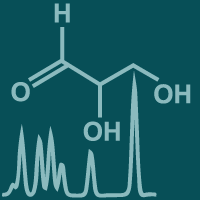Topic Menu
► Topic MenuTopic Editors


Bioactive Compounds and Therapeutics: Molecular Aspects, Metabolic Profiles, and Omics Studies

Topic Information
Dear Colleagues,
Bioactive compounds can serve as drugs or can inspire novel synthetic structures to be employed for the treatment of numerous human illnesses, including cancer and COVID-19. Natural products and synthetic compounds represent a massive group of biologically active factors with potential roles in medical fields. For example, the antioxidant properties of phytomolecules may have implication as therapeutic agents. Nonetheless, great attention is being devoted to the repositioning of ‘orphan drugs’ and repurposing of existing drugs for novel medical scopes. In this context, dissecting the molecular connections with a treatment and the metabolic response of a system are fundamental aspects to investigate. These strategies allow the identification of pathways related to specific metabolites or proteins with a role in pathogenesis or the discovery of mechanistic insights important to prevent cellular damage and sequelae in patients. Nonetheless, the support offered by the latest state-of-the-art omics technologies can provide a global view on the effects generated by bioactive compounds in health and disease. This Topic will collect experimental outcomes concerning the effects of molecules extracted from natural sources or chemically modified in synthetic/semisynthetic derivatives, with potential effects on human health. The Topic will embrace research papers, reviews, communications, etc. based on in vitro and in vivo molecular and biochemical assays, including biomolecular interactions, antioxidant analyses, proteomic and metabolomic profiling, as well as in silico investigations.
Dr. Giovanni N. Roviello
Dr. Michele Costanzo
Topic Editors
Keywords
- bioactive compounds
- metabolomics
- proteomics
- synthetic biology
- systems biology
- medicinal chemistry
- phytochemistry
Participating Journals
| Journal Name | Impact Factor | CiteScore | Launched Year | First Decision (median) | APC |
|---|---|---|---|---|---|

Biomolecules
|
4.8 | 9.4 | 2011 | 16.3 Days | CHF 2700 |

Cells
|
5.1 | 9.9 | 2012 | 17.5 Days | CHF 2700 |

International Journal of Molecular Sciences
|
4.9 | 8.1 | 2000 | 18.1 Days | CHF 2900 |

Metabolites
|
3.4 | 5.7 | 2011 | 13.9 Days | CHF 2700 |

Molecules
|
4.2 | 7.4 | 1996 | 15.1 Days | CHF 2700 |

MDPI Topics is cooperating with Preprints.org and has built a direct connection between MDPI journals and Preprints.org. Authors are encouraged to enjoy the benefits by posting a preprint at Preprints.org prior to publication:
- Immediately share your ideas ahead of publication and establish your research priority;
- Protect your idea from being stolen with this time-stamped preprint article;
- Enhance the exposure and impact of your research;
- Receive feedback from your peers in advance;
- Have it indexed in Web of Science (Preprint Citation Index), Google Scholar, Crossref, SHARE, PrePubMed, Scilit and Europe PMC.

